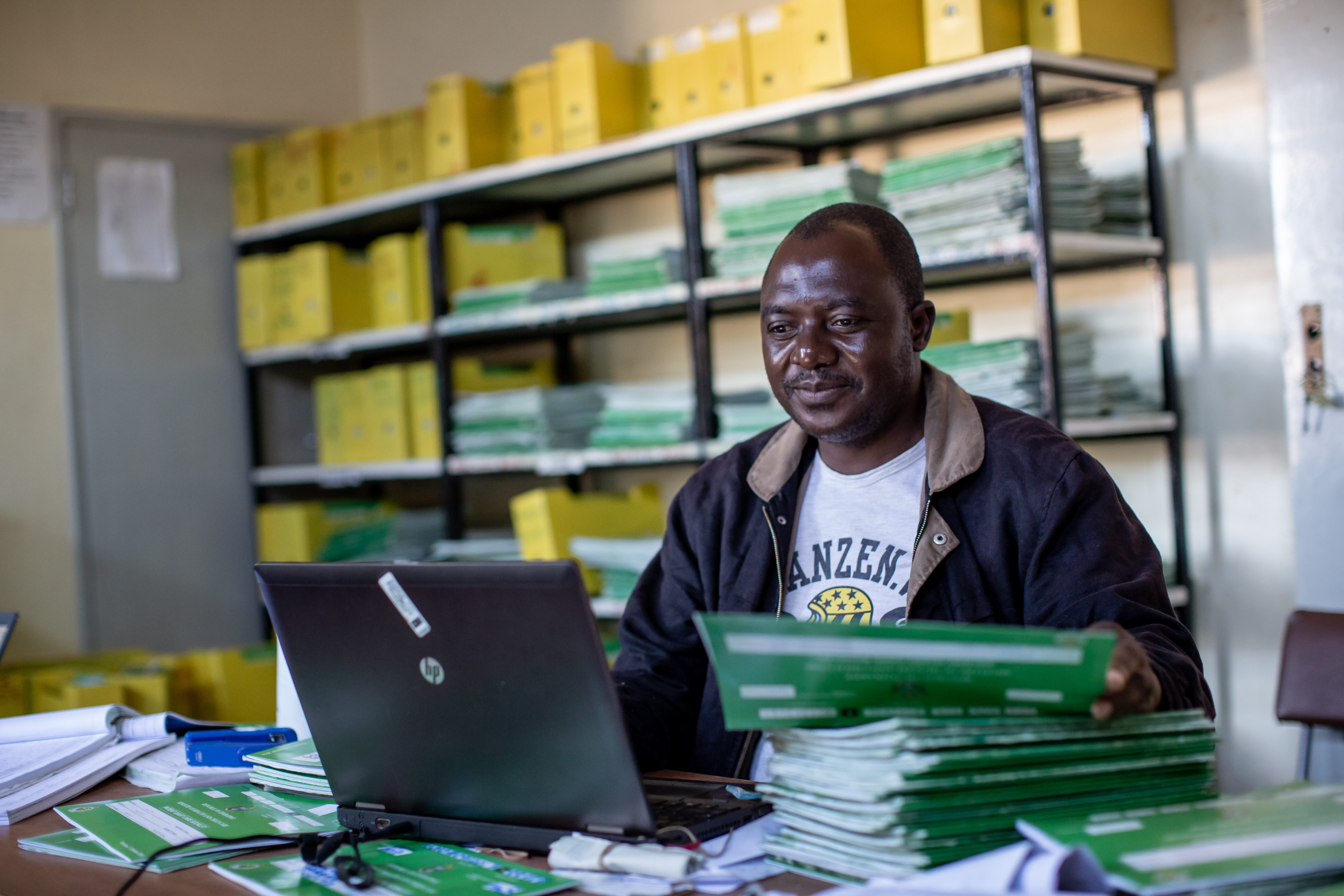Can insurance and telemedicine revolutionize healthcare in Africa?
November 3, 2022

A health worker conducts a telemedicine session in Zimbabwe.
COVID-19 has exposed deficiencies and gaps in healthcare worldwide, in countries rich and poor, large and small, inadequacies which contributed to more than 16.5 million deaths and many more debilitating illnesses. And the resulting social and economic consequences have been breathtakingly severe.
In September 2022, the World Health Organization (WHO) warned that one person died of COVID-19 every 44 seconds.
In some places more than others, the deficiency in universal health coverage is stark. This is particularly the case in sub-Saharan Africa, which has more than 400 million people without universal health coverage, nearly half of the total world-wide. The lack of access has many primary and secondary implications, going beyond sickness and indeed death, through to major impacts on livelihoods, productivity, growth and more. For individuals, and families, those without health coverage, are easily pushed into poverty because of out-of-pocket health expenses. In many cases they simply do not seek medical treatment to avoid expenses, with grave risks to their health. Even before the COVID-19 pandemic, half a billion people were being pushed or pushed further into extreme poverty because of payments they made for healthcare. WHO and the World Bank expect that that number is now considerably higher.
Before the COVID-19 pandemic, 11 million people in the region – 100 million people worldwide – were pushed into financial catastrophe due to health costs every year. It is widely agreed that the situation was aggravated because of the pandemic, while many of the health gains made in recent decades at risk due to the challenges and fears associated with accessing health services. The situation in sub-Saharan Africa is serious: healthcare is not free in most countries and only four out of 36 surveyed sub-Saharan countries have a health insurance coverage rate of over 20 percent.
The question is where we go from here? Although the pandemic has presented enormous challenges to individuals, communities, and countries, it has also offered an unprecedented opportunity to reconsider healthcare. At the height of the pandemic we wrote about how COVID-19 appeared to be generating substantial interest in two phenomena, which, when taken together could revolutionize healthcare in a region like sub-Saharan Africa: firstly how the pandemic has both increased the willingness of people to adopt telemedicine, and how it has triggered the trend towards the digitalization of business models in the insurance sector.
Health insurers use telemedicine in three ways to enhance benefits for existing clients and reach new clients. As a reimbursed service as part of a broader fee-for-service linked health insurance; as an add-on to a simple, mass-market offering; and as an insurance offering designed around a standalone telemedicine model.
In the sub-Saharan region, there are barriers to the development and success of health insurance on the demand side, the supply side in both the insurance sector and the health system, as well as on the regulatory side. While telemedicine alone cannot tackle all barriers, an expansion could play a critical role in mitigating some of the barriers that are restricting access.
Telemedicine enables patients to save both money and time while it also reduces the impact of geographic distance thus tearing down a key barrier to the success of health insurance as people can enjoy far greater access to health services. Telemedicine can also reduce the costs of cover for health services while providing access to new types of health services, which enhance the value of insurance products. Combined with a more efficient use of human resources for health, it offers an opportunity to bring down the costs while increasing the quality of healthcare.
The latest UNDP Insurance and Risk Finance report examines the potential for business, health and technology coming together. It estimates that by leveraging telemedicine, 186 million people across sub-Saharan Africa could get affordable health insurance. This constitutes almost half of the people without access to health care in the region. In total, the report estimates, 343 million people could, in principle, have health insurance based on the affordability threshold assumptions with an annual cost of some US$25 billion.
How can we ensure that these 343 million will actually get affordable health insurance? Three actions immediately stand out.
Firstly, the regulatory environment needs to become conducive to support innovative health insurance models. This includes the protection of data rights, patients’ and clients’ rights, risk-based regulation for telemedicine, and the promotion of responsible innovation.
Secondly, communicating the value of telemedicine for both clients and providers is key for scaling uptake. It may be logical to use telemedicine, but long-standing opinions and attitudes of people may stand in its way. The rise of telemedicine will be invigorated by increased knowledge and subsequently willingness for the uptake of telemedicine. Important barriers to development need to be tackled.
Thirdly, effective aggregators and partnerships, including public-private partnerships, will be essential to ensure that telemedicine is adopted at scale. Although these partnerships may require complex arrangements, the insurance solutions need to be simple and take the real needs and local contexts into account to ensure that telemedicine services are tailored to diverse client groups.
Leveraging telemedicine in sub-Saharan Africa is not a small thing. It can be a game-changer. Health is a driver and outcome of development and critical to getting back on track to achieving the Sustainable Development Goals. This is a moonshot that is almost certainly worth investigating further.

 Locations
Locations
